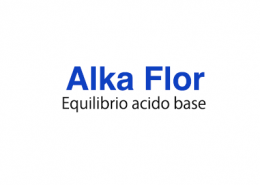Estromin regolarizza molti fattori che predispongono a Sindrome premestruale (PMS), riduzione di PGE1 antiinfiammatorie a scapito di PGE2 proinfiammatorie, riduce la Prolattina elevata in chi ha la PMS, abbassa i livelli di Rame tramite lo Zinco, contribuisce a ridurre la cellulite e i vari sintomi legati ad iperestrogenismo. Ribilancia il sistema immunitario TH!-TH”
“Il rame aumenta la produzione degli estrogeni mentre lo zinco stimola la produzione di progesterone, in molte donne con sindrome premestruale vi è un rapporto elevato Rame Zinco con una carenza di quest’ultimo, per cui la sua supplementazione migliora i sintomi tipici di questa sindrome”
Zinc and copper levels in premenstrual syndrome
Chuong CJ1, Dawson EB.
Author information
Abstract
OBJECTIVE:
To determine whether changes in peripheral zinc and copper levels are associated with symptoms of premenstrual syndrome (PMS).
DESIGN:
Ten PMS patients and 10 controls …
RESULTS:
In the controls zinc values were not significantly different between the follicular and the luteal phases. In the patients, the values were significantly lower during the luteal phase than during the follicular phase. Lower levels of zinc during the luteal phase in PMS patients, compared with the controls, were noted. Copper levels were noted to be higher during the luteal phase in PMS patients compared with the controls. Because copper competes with zinc for intestinal absorption and serum protein binding sites, zinc:copper ratio can reflect the availability of zinc in the body.
CONCLUSIONS:
Our data suggest that zinc deficiency occurs in PMS patients during the luteal phase, and the availability of zinc in PMS patients during the luteal phase is further reduced by the elevated copper
Zinc: an inhibitor of prolactin (PRL) secretion in humans.
Brandão Néto J1, de Mendonça BB, Shuhama T, Marchini JS, Madureira G, Pimenta WP, Tornero MT.
Author information
Abstract
PRL concentrations significantly fell below basal levels in all subjects in response to the increase in plasma zinc levels, as compared to the controls. These results suggest that acute hyperzincemia can inhibit basal PRL secretion in normal individuals
The role of essential fatty acids and prostaglandins in the premenstrual syndrome
Horrobin DF.
Abstract
Many of the features of the premenstrual syndrome are similar to the effects produced by the injection of prolactin. Some women with the premenstrual syndrome have elevated prolactin levels, but in most the prolactin concentrations are normal. It is possible that women with the syndrome are abnormally sensitive to normal amounts of prolactin. There is evidence that prostaglandin E1, derived from dietary essential fatty acids, is able to attenuate the biologic actions of prolactin and that in the absence of prostaglandin E1 prolactin has exaggerated effects. Attempts were made, therefore, to treat women who had the premenstrual syndrome with gamma-linolenic acid, an essential fatty acid precursor of prostaglandin E1. Gamma-linolenic acid is found in human, but not cows’, milk and in evening primrose oil, the preparation used in these studies. Three double-blind, placebo-controlled studies, one large open study on women who had failed other kinds of therapy for the premenstrual syndrome and one large open study on new patients all demonstrated that evening primrose oil is a highly effective treatment for the depression and irritability, the breast pain and tenderness, and the fluid retention associated with the premenstrual syndrome. Nutrients known to increase the conversion of essential fatty acids to prostaglandin E1 include magnesium, pyridoxine, zinc, niacin and ascorbic acid. The clinical success obtained with some of these nutrients may in part relate to their effects on essential fatty acid metabolism
Vitex agnus castus extract in the treatment of luteal phase defects due to latent hyperprolactinemia. Results of a randomized placebo-controlled double-blind study
Pyridoxine (vitamin B6) and the premenstrual syndrome: a randomized crossover trial.
Doll H1, Brown S, Thurston A, Vessey M.
Author information
Abstract
A randomized double-blind crossover trial was conducted to study the effects of pyridoxine (vitamin B6) at a dose of 50 mg per day on symptoms characteristic of the premenstrual syndrome. Sixty three women aged 18-49 years, identified by means of a general practice based survey of menstrual patterns in the community, entered the trial. All of the women had noticed moderate to severe premenstrual symptoms during the previous year. The women kept a daily menstrual diary which graded the severity of nine individual symptoms from zero to three. After completing a diary for an initial month the women were randomized to receive either drug or placebo for three months, after which the treatments were crossed over for a further three months. Thirty two women completed the full seven months of the study. In these women a significant beneficial effect (P less than 0.05) of pyridoxine was observed on emotional type symptoms (depression, irritability and tiredness). No significant effect was observed on premenstrual symptoms of any other type.
Vitex agnus castus extract in the treatment of luteal phase defects due to latent hyperprolactinemia. Results of a randomized placebo-controlled double-blind study
Milewicz A1, Gejdel E, Sworen H, Sienkiewicz K, Jedrzejak J, Teucher T, Schmitz H.
Author information
Abstract
The efficacy of a Vitex agnus castus preparation (Strotan capsules) was investigated in a randomized double blind study vs. placebo. This clinical study involved 52 women with luteal phase defects due to latent hyperprolactinaemia. The daily dose was one capsule (20 mg) Vitex agnus castus preparation and placebo, respectively. Aim of the study was to prove whether the elevated pituitary prolactin reserve can be reduced and deficits in luteal phase length and luteal phase progesterone synthesis be normalized. Blood for hormonal analysis was taken at days 5-8 and day 20 of the menstrual cycle before and after three month of therapy. Latent hyperprolactinaemia was analysed by monitoring the prolactin release 15 and 30 min after i.v. injection of 200 micrograms TRH. 37 complete case reports (placebo: n = 20, verum: n = 17) after 3 month of therapy were statistically evaluated. The prolactin release was reduced after 3 months, shortened luteal phases were normalised and deficits in the luteal progesterone synthesis were eliminated. These changes were significant and occurred only in the verum group. All other hormonal parameters did not change with the exception of 17 beta-estradiol which rouse up in the luteal phase in patients receiving verum. Side effects were not seen, two women treated with the Vitex agnus castus preparation got pregnant. The tested preparation is thought to be an efficient medication in the treatment of luteal phase defects due to latent hyperprolactinaemia






